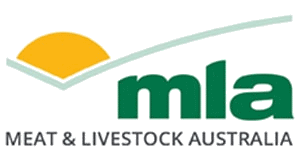What is happening in the Australian lamb market right now?
Over the past year, the lamb market has seen a turnaround, with strong sentiment and an improved weather outlook. The industry has seen prices improve by 10–20% compared to a year ago.
When it comes to lambing season, the availability of high-quality feed is critical to not only produce lambs of high quality but to additionally ensure healthy lamb fertility into the following year.
The 2024 lambing season is approaching and with the late autumn break in the southeast of Australia there will be an impact on the upcoming lamb crop. With lower rainfall in key sheep country will be an increase in demand for grain and fodder producers focusing on ewe survival for next year’s lamb crop to maintain the fertility and health of their ewes.
Also: Quarterly Australian Lamb Slaughter Hits All-Time High
Given the current market situation, the Heavy Lamb and Trade Lamb Indicators are diverging from the Light Lamb and Restocker Lamb Indicators. After starting the year at approximately 750¢/kg cwt, the gap between these indicators has now grown to around 30%. The largest gap between the indicators was seen in August 2023 to October 2023, when the price eased from both market sentiment and the forecasted weather outlook.
What does this mean for you? The seasonal conditions have driven the divergence in price between the Trade Lamb and Heavy Lamb Indicators vs The Light Lamb and Restocker Lamb Indicators. This is where heavier lambs are entering the market as a result of protein demand both domestically and in the United States, resulting in week-on-week record cattle and sheep slaughters. A lower supply of light lambs has been driven by the west-to-east transfer of restocker style lambs combined with drier conditions in Victoria leading to a divergence in price.
Key points:
- Lamb prices are strong from improved weather outlook.
- Heavier lambs are entering the market before lambing begins.
- Drier conditions in Victoria leading to less demand for lighter lambs.
MLA
